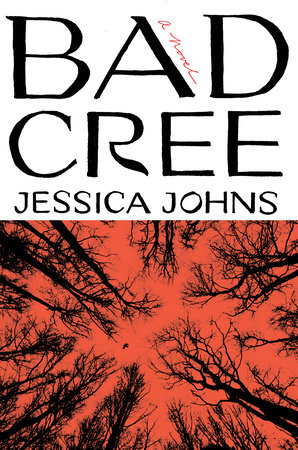Bad Cree by Jessica Johns is one of those books I really wanted to like, but ended up feeling “meh.” The synopsis of this new release sounded promising, intriguing, and an interesting addition to the horror genre. Additionally, I was excited to get some additional indigenous representation. Continue reading my review to see why Bad Cree did not quite hit the mark for me.
Summary
When Mackenzie wakes up with a severed crow’s head in her hands, she panics. Only moments earlier she had been fending off masses of birds in a snow-covered forest. In bed, when she blinks, the head disappears.
Night after night, Mackenzie’s dreams return her to a memory from before her sister Sabrina’s untimely death: a weekend at the family’s lakefront campsite, long obscured by a fog of guilt. But when the waking world starts closing in, too–a murder of crows stalks her every move around the city, she wakes up from a dream of drowning throwing up water, and gets threatening text messages from someone claiming to be Sabrina–Mackenzie knows this is more than she can handle alone.
Traveling north to her rural hometown in Alberta, she finds her family still steeped in the same grief that she ran away to Vancouver to escape. They welcome her back, but their shaky reunion only seems to intensify her dreams–and make them more dangerous.
What really happened that night at the lake, and what did it have to do with Sabrina’s death? Only a bad Cree would put their family at risk, but what if whatever has been calling Mackenzie home was already inside?
Review
(Disclaimer: I received this book from the publisher. This has not impacted my review which is unbiased and honest.)
Characters

The characters in Bad Cree present to the audience a brief look into some of the experiences of different people, mostly women, in the indigenous communities. Additionally, Johns included a brief representation of other gender identities. While we do get this increased representation, unfortunately, the characters seemed undeveloped. Their motivations were not always clear, making their choices seem in no way understandable to explain. In a way, the characters themselves seemed like recycled versions of themselves, lending to a circular and repetitive feel. One could argue that combining the existing characters to have fewer characters could have helped to give more depth to the characters.
Plot and Pacing
The plot was certainly very intriguing. I have always enjoyed the use of dreams as avenues for storytelling in film and print. The dreams in Bad Cree add an interesting element but also contributed to the circular repetitive feel I had about the characters. It was not the best usage of this plot device. This led the pacing to being slowed down as well. Beyond that, once the pacing did pick up, it was almost like the plot seemed to change and go down a different road. Twists and new developments are fine, but the way it happened in Bad Cree seemed superimposed and unnatural. A final note on the plot, it did not really feel horror-like at all, which was an unfortunate pitfall.
Overall
I do not feel strongly one way or the other about Bad Cree. While I enjoyed the aspects of indigenous folklore, it was not quite a horror book. I support incorporating dreams as a plot device, but the pacing was not spot-on for me.
Find Bad Cree on Goodreads, Amazon, Indiebound, Bookshop.org & The Book Depository